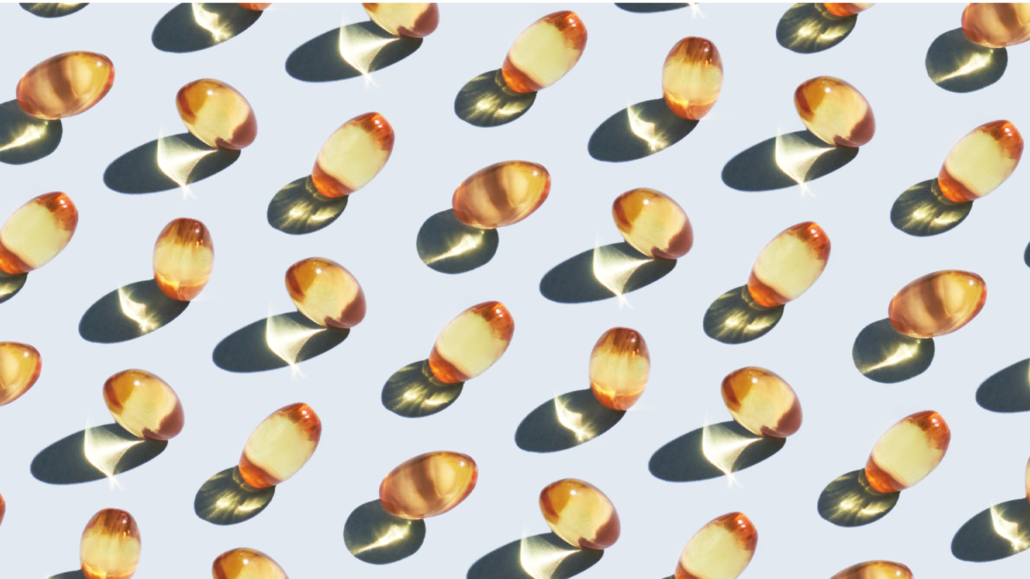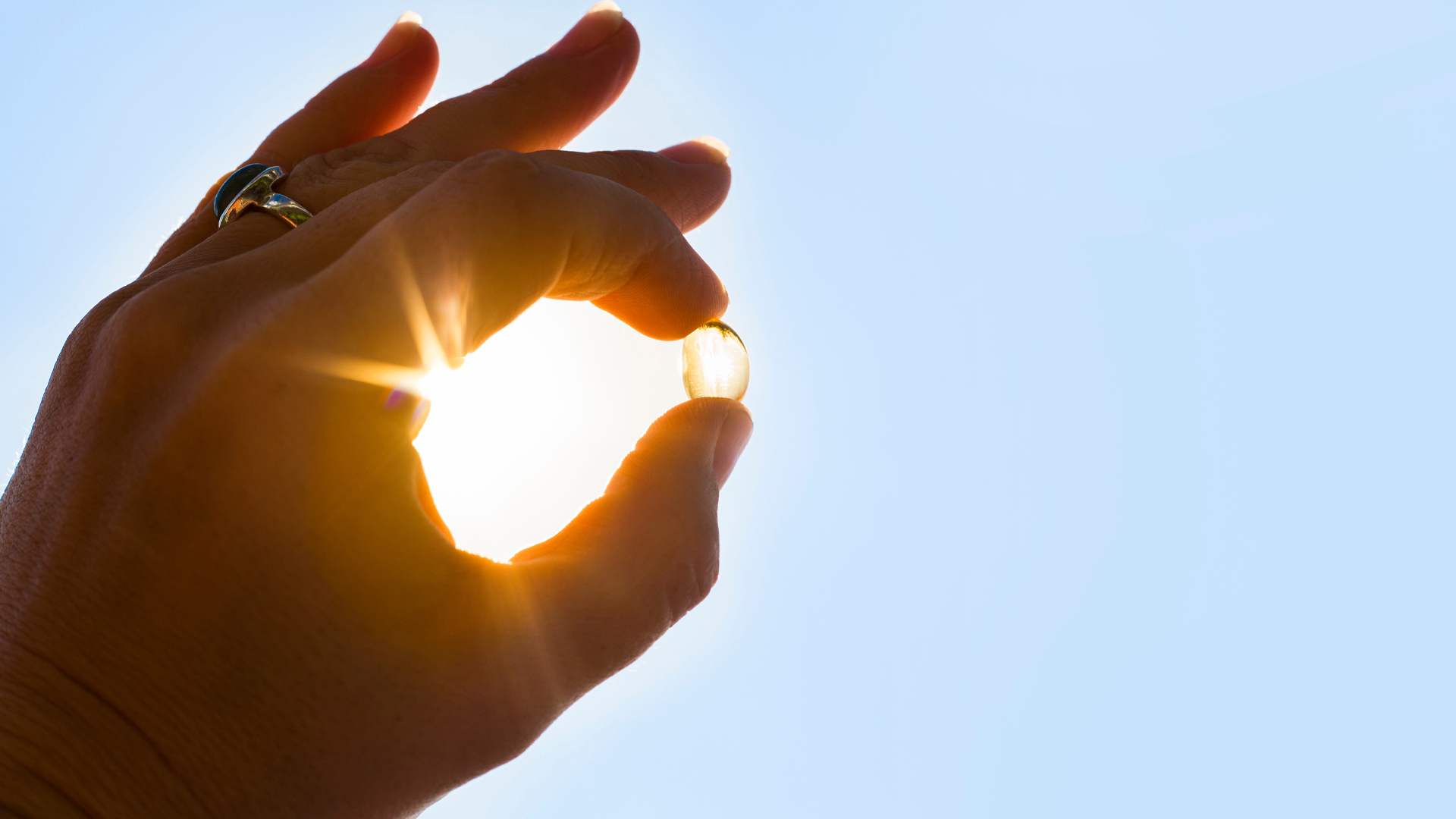Why is Vitamin D So Popular? How To Identify Deficiencies and Optimize Your Levels
Just How Deficient Are We?
Nearly 42% of Americans are deficient in vitamin D, including 82% of Black Americans and 69% of Hispanic Americans. For decades, the threshold for a deficiency has been set extremely low based on our current understanding.
Vitamin D does much for our health, like maintaining bone mass, supporting muscle function, and serving as a hormone to balance other key body systems. In addition, certain conditions are far more prevalent in those with inadequate levels, such as cancer, depression, multiple sclerosis, and more.
Despite these benefits, we are still widely deficient. Many factors contribute to this, including decreased nutrients in our food, aging, obesity, medical conditions, limited sun exposure, and excessive use of sunscreen and sun-blocking clothing.
Some people supplement their vitamin D, but this is usually not enough, even if they follow guidelines. As we’ll see, the guidelines are still too low. The Institute of Medicine made its recommendation in 2010 with an error in data that only considered the role of vitamin D in bone health, despite its importance for the rest of the body. According to researchers, most supplement companies recommend a minimum dose — a level far too low for our health, especially if sunlight is limited.
What Does Vitamin D Do?
Clinically referred to as serum 25(OH)D, vitamin D is a vital nutrient that we are simply under-consuming.
It was first named in 1921 after being isolated from cod liver oil. The research at the time was focused on preventing rickets—a condition affecting bone formation. Nearly 100 years earlier it had been discovered that cod liver oil could treat rickets, but only vitamin A was associated with the beneficial effects. Vitamin D was originally deemed a vitamin because it was believed that humans couldn’t produce it themselves and could only absorb it from food.
Under this assumption, vitamin D was added to milk in the 1930s, which almost completely eliminated rickets. For a time, it seemed like the problem was solved. But vitamin D does so much more, and our health can be positively or adversely affected by our vitamin D levels.
Why sets vitamin D apart?
Unlike other vitamins, we do not need to obtain it from outside of our bodies. Our skin can make all the vitamin D we need, given the right circumstances. Many life forms—from fish to mushrooms—make vitamin D from sunlight. For this reason, vitamin D is also known as the “sunshine vitamin”. Long before the “discovery” of vitamin D, the healing benefits of sun exposure were understood by those in Hippocrates’ time.
Vitamin D is more than just a vitamin as it also functions as a “prohormone.” This means that the body takes some of our vitamin D and converts it into a hormone called calcitriol, which helps to maintain a healthy calcium level. And calcium isn’t just for bones—it is also crucial for muscle contraction, nerve conduction, and blood clotting.
Overall, vitamin D defies a singular classification. It is a nutrient, prohormone, and vitamin when sunlight is not adequate. The National Institutes of Health offers a comprehensive overview of the functions of Vitamin D, including current research on associated health states, but this is limited to studies that have had proper funding and time to reach a conclusion.
The latest shows positive associations in lowering chronic conditions such as osteomalacia, diabetes, multiple sclerosis, infections, cancer, and heart disease. Increasingly, studies are also showing how a deficiency in vitamin D can have negative effects on mental health. With so many potential benefits, it is worth looking further at vitamin D supplementation.
Vitamin D’s Effect on Depressive Symptoms and Mood
Depression is no laughing matter. Many types of depressive mood disorders exist, including major depressive episodes, postpartum depression, seasonal affective disorder (SAD), and bipolar mood disorder. Each year, these conditions affect nearly 20% of adults in the United States.
A single bout of depressive symptoms can disrupt a person’s life in many ways. It affects relationships, work performance, and sometimes the ability to perform everyday tasks.
For this reason, any correlation between depressive symptoms (including mood disorders) and vitamin D is worth investigating. Several clinical studies of patients presenting with mood disorders and diagnosed depression have lower than expected levels of vitamin D. However, research is still needed to determine if increasing one’s vitamin D level helps with depressive symptoms.
The correlation between vitamin D status and mood disorders could be related to other lifestyle factors. A person with a tendency toward depression may not want to go outside or take supplements, both of which quickly lower vitamin D levels. Vitamin D also supports many bodily processes that contribute to overall health such as proper immune and anti-inflammatory function. And both of these bodily processes are linked to depression.
There’s a fascinating meta-analysis that looks at vitamin D status and supplementation with the resolution of depressive symptoms. Several studies have not shown general mood improvement when vitamin D is supplemented in “otherwise healthy” adults. However, there is research showing improvement of major depressive symptoms with vitamin D supplementation.
Seasonal Affective Disorder and Vitamin D
Let’s not forget about the seasonal nature of our moods. In the winter it is not uncommon to feel “blue,” especially in later winter months. This certainly correlates to our annual lowest vitamin D status. Additional supplementation with monitoring of our vitamin D status is even more helpful in the winter months. A promising study showed that (relatively moderate) vitamin D3 supplementation in winter months enhanced mood in healthy subjects.
Regardless of the season, many symptoms of depression are also symptoms of inadequate vitamin D levels. This includes muscle weakness, chronic fatigue, and illnesses such as the common cold. These can cause a person to feel lethargic and unwilling to even get out of bed.
Other conditions such as fibromyalgia, chronic fatigue syndrome, and secondary hyperparathyroidism all have an emotional component to them, and each is benefited by increased levels of vitamin D.
How To Test and Raise Your Vitamin D Levels
Before you jump right into strategies to raise your vitamin D levels, it’s a good idea to get your current levels tested. This will help you to understand how previous habits have affected your status and how far off your levels are from baseline.
Your primary care physician may be able to order routine or regular vitamin D tests, but they might not believe it important. Fortunately, there are private companies that offer vitamin D testing either alone or as a package. The most common test for vitamin D assesses 25-hydroxyvitamin D, or 25(OH)D, from a blood sample. It can be drawn at a laboratory or by a mail-in finger prick sample that you can do from the comfort of your home.
Grassroots Health is one such company that offers subscriptions for you to monitor your levels repeatedly as you change your habits and supplementation. Tests from different private laboratories generally cost between $50-80. This might seem pricey given how inexpensive vitamin D supplements are, but it’s worth it to know your risk.
Under current recommendations, less than 30 ng/ml is too low, and less than 20 can put you at risk of osteoporosis and rickets (yes, that old disease that fortified milk was supposed to fix!)
Now that you know the importance of raising your vitamin D levels, how can you safely and effectively raise them?
Sunlight: The Original (And Cheapest) Vitamin D Source
Your body is designed to make its vitamin D from exposure to our closest star: the sun. Your skin has cells that create a form of vitamin D that is combined with other cofactors to support physical, and perhaps emotional health. If you can make your vitamin D from sunlight, you will gain other benefits such as improved mood and better sleep.
Many people simply do not get enough sunlight, and there are many reasons for this. We wear far more clothing than our hunter-gatherer ancestors. We also live further away from the equator, where the sun is more directly overhead for more of the year. And in recent decades, the guidance on sunscreen use has further blocked us from our main source of vitamin D.
The optimal way to create vitamin D from sunlight is midday sun exposure. Depending on your skin tone, aim for 10-30 minutes of midday sunlight on as much exposed skin as possible. Do this until just before you show any pink. Only three times per week during the spring, summer, and fall months will be sufficient.
Food Sources of Vitamin D
Obtaining vitamin D from foods is another good strategy, but it also comes with some caveats. Many professionals will recommend “oily fish” as a source of vitamin D, but the origin of that fish is rarely mentioned. Farmed salmon contains about 10% of the vitamin D as wild salmon. This makes sense because fish, just like humans, need to be exposed to natural sunlight to create vitamin D. Farmed salmon are raised in crowded spaces without adequate sunlight and are fed an unnatural diet low in nutrients.
Mushrooms have long been known to contain vitamin D, but the slightly less absorbable D2 version. And there is still the option of getting your vitamin D (and vitamin A) from milk and fortified foods. This is supplementation of a different kind (fortification) but it can still be beneficial. The drawback is that you have less immediate control over how much you are consuming, and it might be too low compared to sunlight or D3 supplements.

Vitamin D Supplementation: Simple & Effective (Usually)
After sunlight and food sources come vitamin D supplementation. With the inconveniences of sun exposure and limited availability in food sources, vitamin D supplements are an excellent way to raise our vitamin D status, but there are some discrepancies regarding bioavailability.
First, start with a reliable supplement manufacturer. This is not the time to shop discount brands. Many reliable brands of D2 and D3 supplements exist, and some bundle their formula with the necessary cofactor K2 to help with absorption. Innovative Medicine prefers the Genestra D3 K2 Mulsion as their top choice.
When should you take your vitamin D supplement? Earlier in the day and particularly in the morning is best to minimize any effects on your circadian rhythm. This “sunshine vitamin” could interfere with sleep if taken near bedtime. When possible, take your vitamin D with fatty foods to increase absorption. Adding a probiotic near the time of your vitamin D can also improve absorption, according to one clinical study.
With all supplemental vitamin D (including from food), cofactors are important. Vitamin K2, magnesium, and calcium are both crucial supporting nutrients that help vitamin D utilization and bone mineralization. Additional cofactors include boron and zinc.
One vitamin that competes with vitamin D is retinol, the vitamin A that comes from animal sources. Some prescription drugs that block vitamin D absorption include statins, prednisone and steroid medications, and weight-loss drugs. Ask your trusted medical professional about these interactions before you add in any supplement.
How do you know if you have succeeded? After approximately 3 months of changes, it’s time to test your levels again. Once you have raised your vitamin D levels to approximately 40-60 ng/ml, you can test less frequently, but be sure to continue your new healthy habits.
Moving Forward: Healthy Vitamin D and Healthy Moods
Depression is just one condition that can potentially benefit from healthier vitamin D levels. But vitamin D is not a panacea. You can further support your mental wellbeing with holistic practices like healthy sleep, time outdoors, and healthy, supportive relationships. This is an interconnected world, and you have the power to help and heal yourself in more ways than you might think.
Let us know your questions or comments on this article. Every day we are learning more about the benefits of vitamin D and its impact on our overall health.
Want to learn about chronobiology and its effects on your health and mood? Read our article here.
Disclaimer: The statements made in this article have not been evaluated by the Food and Drug Administration. Any products or treatments mentioned are not intended to diagnose, treat, cure, or prevent any disease. Please consult a licensed medical practitioner for medical advice.
At Innovative Medicine, we believe in transparency. We want you to know that we may participate in affiliate advertising programs pertaining to products mentioned herein.
See how we can help you restore complete health of body, mind & spirit.
Join our mailing list and receive exclusive offers + information!







Leave a Reply
Want to join the discussion?Feel free to contribute!